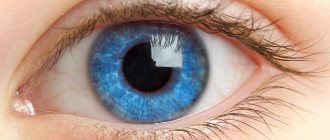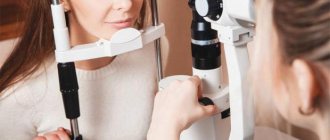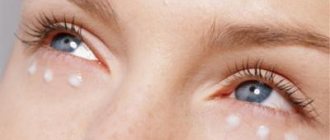Daily lenses are the most hygienic type of contact optics. To care for them, you do not need to buy additional disinfectants and cleaning products. However, they require the same careful attention during operation as scheduled replacement models. We'll tell you how to properly put on and remove daily lenses.
Disposable lenses are available from many manufacturers. This is a truly convenient type of optics, and in some cases simply irreplaceable. For example, daily logs are suitable for the following categories of users:
- the fact that he travels often;
- athletes, rescuers, firefighters;
- employees with irregular schedules;
- schoolchildren and teenagers;
- for those new to wearing optics.
An undoubted advantage of daily disposable lenses is the absence of the need to devote time every evening and find conditions for carrying out caring procedures. That is why wearing daily lenses is convenient for those who make regular trips or work on a rotating schedule. In this case, it is much more convenient to simply take off the worn pair before going to bed and throw it away, and put on a new one in the morning. It is also more convenient for schoolchildren, especially younger ones, to use daily lenses due to the fact that they are often absent-minded or careless, do not always carefully observe personal hygiene, and this can lead to infection in the eyes. Such categories of patients as athletes and fire rescuers often find themselves in contaminated external conditions (smoke, dust), and they also do not always have the opportunity to regularly clean their lenses, given the specifics of their activity.
But, even though the lenses must be replaced every day, they have direct contact with the mucous membrane. If you do not follow the rules of hygiene when putting on and taking off contact optics, you can get an infection in your eyes and develop an inflammatory disease. In addition, many people are simply afraid to switch from glasses to contact lenses due to the fact that they do not know how or are afraid to wear lenses. We'll tell you how to put on and remove lenses correctly and safely.
Does it hurt to put on lenses?
There shouldn't be any pain. Out of habit, you may experience slight discomfort, which quickly passes.
Unpleasant sensations sometimes occur when using rigid vision correctors, which are designed to correct defects in the lens or cornea. There is no discomfort when wearing soft contact lenses made of silicone hydrogel and hydrogel.
As a rule, during the consultation, the ophthalmologist will tell you how to properly put on contact lenses.
Tips on how not to damage a vision correction item when checking
- Before any manipulation of the lens, you must wash your hands with soap to avoid a number of problems.
- The contact lens should always be moistened with a special solution.
- You should not turn the product over with your fingernails, as the lens material is very fragile and can be easily torn or scratched.
- If the product falls on the floor, it is no longer suitable for subsequent wearing.
- To avoid tearing the lens, it should not be wiped during inspections.
- To prevent the optical product from deforming and drying out in the open air, it should be treated with a drop of saline solution every minute of testing.
- It is necessary to check the external condition of the lens for dust, lint, scratches and torn edges. These lenses can no longer be used.
Proper wearing of lenses does not create discomfort, eliminates the need to wear glasses and allows you not to worsen your eye health.
It is important to ensure that the lenses are put on the correct way. So it will be impossible to develop more unpleasant eye diseases than just poor vision.
Before any manipulations with contact lenses, you should wash your hands with neutral soap without fats and creams, and then dry your hands with a clean towel.
Putting on contact lenses for the first time
How to put on contact lenses for the first time - photo
Daily use of vision correctors requires delicacy. They are very thin and light and can quickly deteriorate if not properly cared for. It’s worth being prepared for the fact that you won’t be able to do everything quickly the first time.
Instructions for putting on
- Wash and disinfect your hands thoroughly. You can use antibacterial soap.
- Dry your hands with paper towels or a cloth towel. There should be no lint left on your fingers.
- Sit down at the table, get comfortable and open the container containing the right lens.
- Use tweezers to remove the product and carefully place it on your fingertip. The most convenient way to put on the optics is with your index finger.
- Pull down and secure the lower eyelid with your middle finger, exposing the cornea.
- Bring the bottom edge of the lens to the eyeball, gently touching the surface. There is no need to rush or make sudden movements.
- Remove your finger when the optic is on the cornea. It should remain on the mucous membrane.
- Repeat the procedure with the second vision corrector.
Removing lenses from eyes
Many people worry about how to remove contact lenses.
- First, prepare the tweezers, wash and dry your hands.
- To make the process easier, wet your fingers with a multi-purpose solution.
- Sit comfortably at a table and touch the surface of the vision corrector with the pad of your index finger. The gaze should be directed forward. It’s better to immediately get used to not focusing on your fingertips. Slide the lens down over the edge of the cornea and touch the underside of the cornea with your thumb.
- Remove the product from your eye. Then, using tweezers, place it in a storage container filled with multi-purpose solution. AquaOptic, intended for daily care, is suitable for this. The solution effectively removes protein deposits and makes sliding the lens over the surface of the eye more comfortable. Thanks to the hyaluronic acid included in the composition, the mucous membrane of the eye is additionally moisturized.
- Similar actions must be carried out with the second lens.
What to do if the optics cannot be removed?
In rare cases, it is not possible to immediately remove contact lenses from the cornea. This occurs when the material dries out and loses its elasticity. It becomes more difficult to pick up vision correctors with your finger.
To quickly remove the optics from the eyes, you need to drip moisturizing drops or a multifunctional solution without cleansing additives onto the mucous membrane. You can use a moisturizing gel. After some time, try removing the lenses from your eyes again.
How to learn to do everything right?
At first, it is more convenient to put on lenses while sitting at a table and bending over a mirror that lies on a horizontal surface. Over time, when you learn to put on lenses the first time, you can try to perform the procedure while standing in front of a mirror hanging on the wall.
It is not advisable for beginners to wear lenses in the bathroom over the sink! You can drop them in the sink and they will wash down the drain.
Instructions:
- Wash your hands thoroughly (avoid getting any crumbs or lint on your fingers).
- For right-handers, place the lens on the tip of the index or middle finger of the right hand (it is more comfortable to put it on when the lens is not completely dry and there is a little solution inside it).
- Using the fingers of your left hand, gently pull back the upper and lower eyelids, opening the eye wide.
- Try not to blink.
- Look either straight or slightly up.
- Touch your eye with your finger and place the entire surface of the lens on the cornea.
- Let go of your eyelids.
- Blink slightly.
- The lens itself will take the correct position.
- If vision has improved and there is no discomfort on the eyelid, then everything was done correctly.
- Put on the second lens in the same way.
It is necessary to visit an ophthalmologist in the first month after starting to use contact vision correction, and then after six months to monitor the condition of the eyes.
Tips for beginners
- Please read the instructions carefully before inserting lenses.
- Make sure that no lint remains on your fingers after using the towel.
- Take your time when putting on or taking off your optics.
- Remove and rinse the lens with solution if discomfort occurs.
- Do not use tap water to clean products.
- If the optics are not disposable, leave them in the container for several hours.
- Make sure the container is tightly closed.
- To avoid mixing up left and right lenses, store them in the appropriate compartments of the container.
How do you know which side to insert?
When asked whether there is a difference which side the vision correction item is worn on, one can only answer in the affirmative. Every contact wearer should know how to tell whether a product is upside down or not. The following explains how to choose the correct side of the product.
Visual inspection
It is visually noticeable that the deformed lens resembles a plate in appearance. If the lens is turned correctly, it looks like the letter “U”.
When the optics are turned in the wrong direction, it looks more like the letter “V”. If it is difficult to determine using this method how the product is worn, whether it is inside out or not, then you can go to a source of good lighting and take a better look at it. Manufacturers often leave special laser markings called “inversion indicators”. Using them you can easily determine the sides of the lens. If the inscription can be read, then you can safely focus on this sign and turn the lens in the right direction, rinse it in the solution and insert it into the eye with the correct side.
If the marking is readable in a mirrored position, then this is a sure sign that the optics are turned inside out. Also, the darkened colored lens looks different in the inverted position. Place the product on the tip of your finger and lower your hand.
If the edges of the lens have a blue or green tint, then everything is fine. But if the edges have a different color from the entire lens, then it is inside out.
Light squeeze test
This test is also called the “taco” method. First, place the lens on the pad of your second finger, and then gently squeeze it between your thumb and index finger. You need to hold the product so that its edges remain free. If the two halves touch each other easily, then the lens is in the correct position. If the edges of the lens do not meet at one point, then this is a clear sign that the silicone optics are inside out.
Putting on test
If none of the above tests helped to find the right side of the lens, then this verification method is used. With this method of checking the eye, it immediately begins to itch, hurt, burn, turn red and cause any inconvenience.
The presented test method should be used with freshly washed hands and a solution-treated lens, so as not to confuse discomfort resulting from an inside-out lens with a dirty lens inserted correctly.
Is it possible not to take it off at night?
For the manufacture of modern optics, silicone hydrogel and hydrogel materials are used. They freely pass oxygen to the cornea, allowing it to receive useful microelements and nutrients. Therefore, even correctors forgotten for one night will not harm the health of the visual organs.
However, you shouldn't get carried away with this. During sleep, protein deposits accumulate on the surface of the correctors. Because of this, the optics restore visual acuity worse, the picture becomes blurry and cloudy. Correctors can only be continued to be used after preliminary cleaning and disinfection.
Indications for wearing
ACUVUE OASYS WITH HYDRACLEAR PLUS lenses are ideal for a person if:
- spends a lot of time at the computer;
- works/lives in air-conditioned or heated rooms with dry air;
- feels tired eyes during the day;
- suffers from farsightedness or nearsightedness;
- prefers to use extended-use lenses, which are replaced twice a month, that is, once every two weeks.
They should be selected by an ophthalmologist.
What happens if you put your lenses on inside out?
Out of habit, it can be difficult to determine which side should be adjacent to the cornea. In the correct position, the product has an even sphere shape; on the wrong side, the edges stretch slightly in height and width. In the latter case, sensations in the eye area change. There is a stinging and burning sensation, discomfort, which makes you want to get rid of the incorrectly worn vision corrector.
How to properly remove lenses that are worn inside out? The process is practically no different from the usual one. The optics move away from the mucous membrane easier and faster.
How can I help my child with the procedure?
Children can begin to independently put on and wear lenses starting from adolescence (from 13-14 years old), provided they understand the standards of hygiene and care.
If contact vision correction is necessary at an earlier age, lenses can be put on a child with the help of an adult.
How to put lenses on your child:
- Wash and dry your hands thoroughly.
- Place the child on a chair with the head slightly tilted back.
- Place the lens on the index or middle finger of your working hand.
- Using the fingers of your other hand, open the upper and lower eyelids.
- Place the entire surface of the lens on the cornea.
- Ask the child to blink slightly.
Use of corneal models
How to properly put on lenses whose size does not exceed 10 mm? They are designed to be fixed to the cornea and have a more rigid design than conventional lenses. Corneal models are used to correct astigmatism, keratoconus, and age-related farsightedness. Often used for night vision correction.
How to wear eye lenses correctly? The process is practically no different from putting on soft models. The only difference is that they need to be placed just below the pupil, and then cover the eyelid.
When positioned correctly, the optics do not create the sensation of the presence of a foreign body. If discomfort occurs, you need to pull out the product and fix it again.
Advantages of lenses and ease of use
The benefits of using two-week lenses from ACUVUE OASYS are as follows:
- Incredible comfort, no feeling of visual fatigue. Thanks to their ultra-smooth surface, extended wear lenses allow the eyelids to glide effortlessly when blinking. This prevents eye fatigue. Also, scheduled replacement lenses are not felt on the eyes and create unsurpassed comfort from morning to evening, even if the environmental conditions are unfavorable.
- One hundred percent oxygen consumption. Thanks to two-week AQUA VIEW OASIS lenses, your eyes “breathe” freely. They do not turn red during use and remain natural throughout the day.
- Long lasting hydration. Thanks to HYDRACLEAR PLUS3 technology, the lenses contain a large amount of a special component that ensures the hydration of the vision throughout the day.
- First class UV protection. ACUVUE OASYS two-week contact lenses have an ultraviolet filter that provides maximum protection against harmful rays throughout the entire period of use.
What are 1-Day Acuvue daily disposable lenses?
The Acuvue line of daily disposable lenses is presented in several options, depending on the eye disease:
- classic for myopia or farsightedness (- or +) 1-DayAcuvue True Eye;
- astigmatic 1-Day Acuvue Oasys for ASTIGMATISM;
- bifocal (for correction of presbyopsia) 1-Day Acuvue MOIST MULTIFOCAL;
- classic 1-Day Acuvue Oasys with Hydralux moisturizing complex (HYDRALUX);
- astigmatic 1-Day Acuvue Oasys for ASTIGMATISM with Hydralux complex (HYDRALUX);
- 1-Day Acuvue Define shine booster (discontinued, but still available).
When choosing the type of SCL, you should take into account such parameters as the base curvature (in the case of the Acuview brand 8.3-9.0), lens diameter and material of manufacture (hydrogel or silicone hydrogel). The individual characteristics of the patient's eyes are determined by the ophthalmologist.
Contraindications
An approximate list of symptoms and diseases for which wearing lenses is strictly prohibited is as follows:
- strabismus (if the angle of curvature is more than 15°);
- subluxation of the lens;
- decreased corneal sensitivity;
- ptosis;
- dacryocystitis;
- blepharitis;
- conjunctivitis;
- defects in the composition of tear fluid;
- xerophthalmia;
- decreased or increased tear production;
- tuberculosis;
- keratitis of various origins;
- AIDS;
- glaucoma.
The ban is due to the symptoms of diseases that have several similar manifestations:
- burning;
- Pain in the eyes;
- redness of the eyeball;
- itching;
- high lacrimation;
- eyelid swelling and redness;
- high sensitivity of the visual organs.
In case of infectious diseases, it is strictly forbidden to wear contact lenses.
Previously, a diagnosis such as diabetes was another contraindication to the use of contact lenses. However, recent ophthalmological research and the creation of daily lenses have made it possible to exclude this pathology from this list.
Restrictions are also imposed by colds, which is due to the fact that the outflow of tear fluid becomes worse due to a runny nose. In this case, various inflammatory eye pathologies provoked by viruses may also develop. That is why, if such a contraindication is identified, it is highly undesirable to use lenses.
Packaging options
You can purchase a pack of six, twelve or twenty-four lenses. You just need to choose the most suitable option, taking into account how often contact vision correction will be used. For example, a package with twelve pairs will last on average for six months of use, if you take into account replacement every two weeks. The maximum packaging is almost a year's supply of lenses.
We put contact lenses on a child
The lenses are comfortable to use at any age. Ophthalmologists allow them to be worn by children as well. It is believed that the optimal age for a child to use lenses is 14 years. This is the period when the child can independently take care of the proper care of the lenses, remove them and put them on.
If the benefit is obvious, doctors may prescribe the use of lenses for children 6-7 years of age. But the small age of the child imposes its own characteristics of their exploitation. First of all, lenses must be ordered with a special prescription.
There are no small models in optical stores. In addition, you should constantly ensure that the child does not go to bed wearing lenses and does not touch his eyes with dirty hands.
Lenses for children cannot be used if the child has inflammatory processes in the eyes or allergic reactions of various types.
If lenses are used by children over the age of 14, they can be taught to put on independently. In this case, all the basic rules apply. If the child is still small and cannot cope independently, an adult puts on the lenses for him.
When putting on lenses, children should adhere to the following basic rules:
- wash your hands well;
- place the lens with the front side on your finger;
- the child is in front of the adult, his head is slightly tilted down;
- an adult fixes the child’s upper eyelid and places the lens in the eye;
- the child blinks his eye several times, making sure that the lens is seated correctly.
To simplify the procedure for using lenses, it is recommended to choose daily lenses for children. They do not require the use of special solutions or disinfection. Daily lenses minimize the risk of infection.











